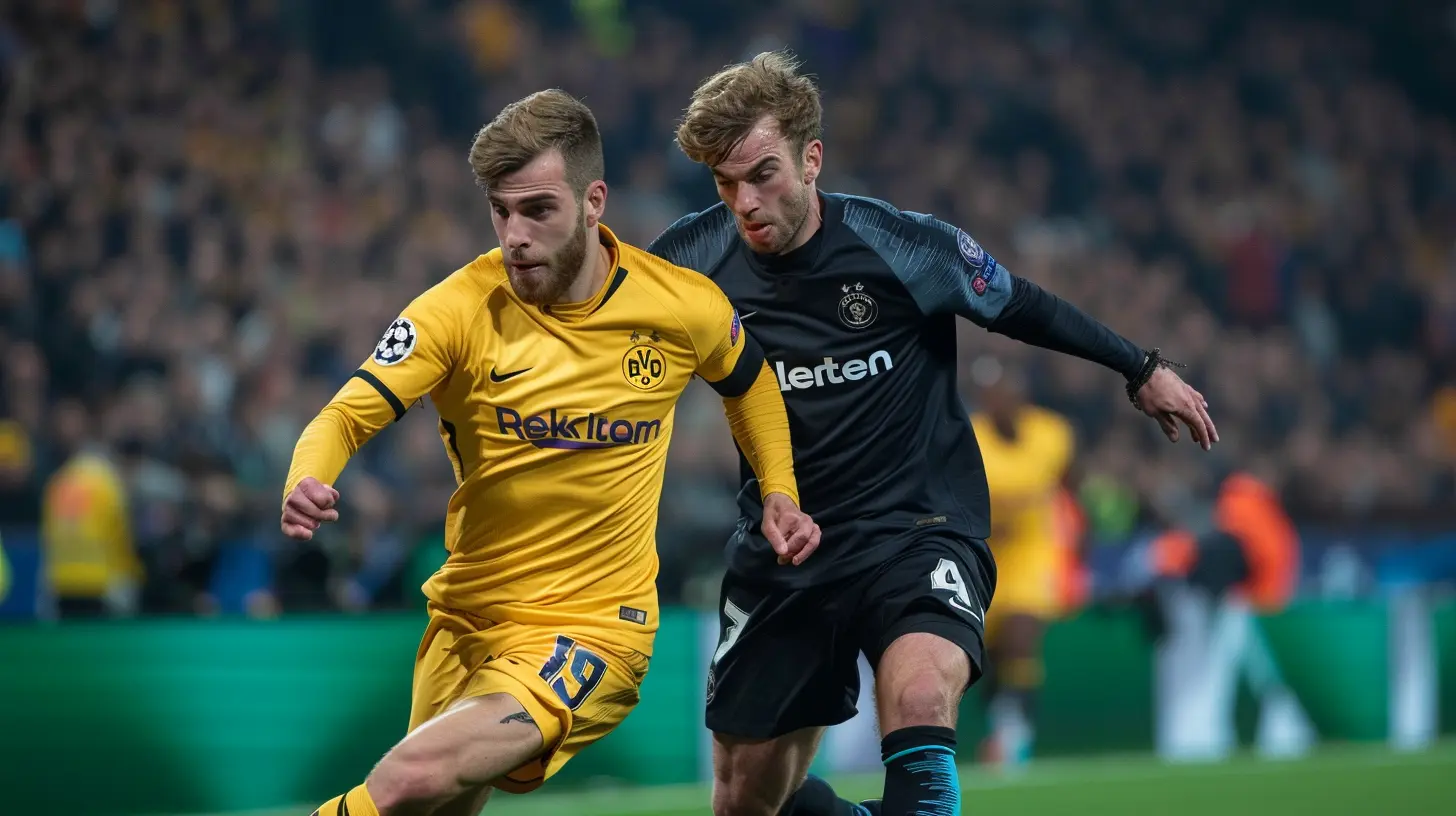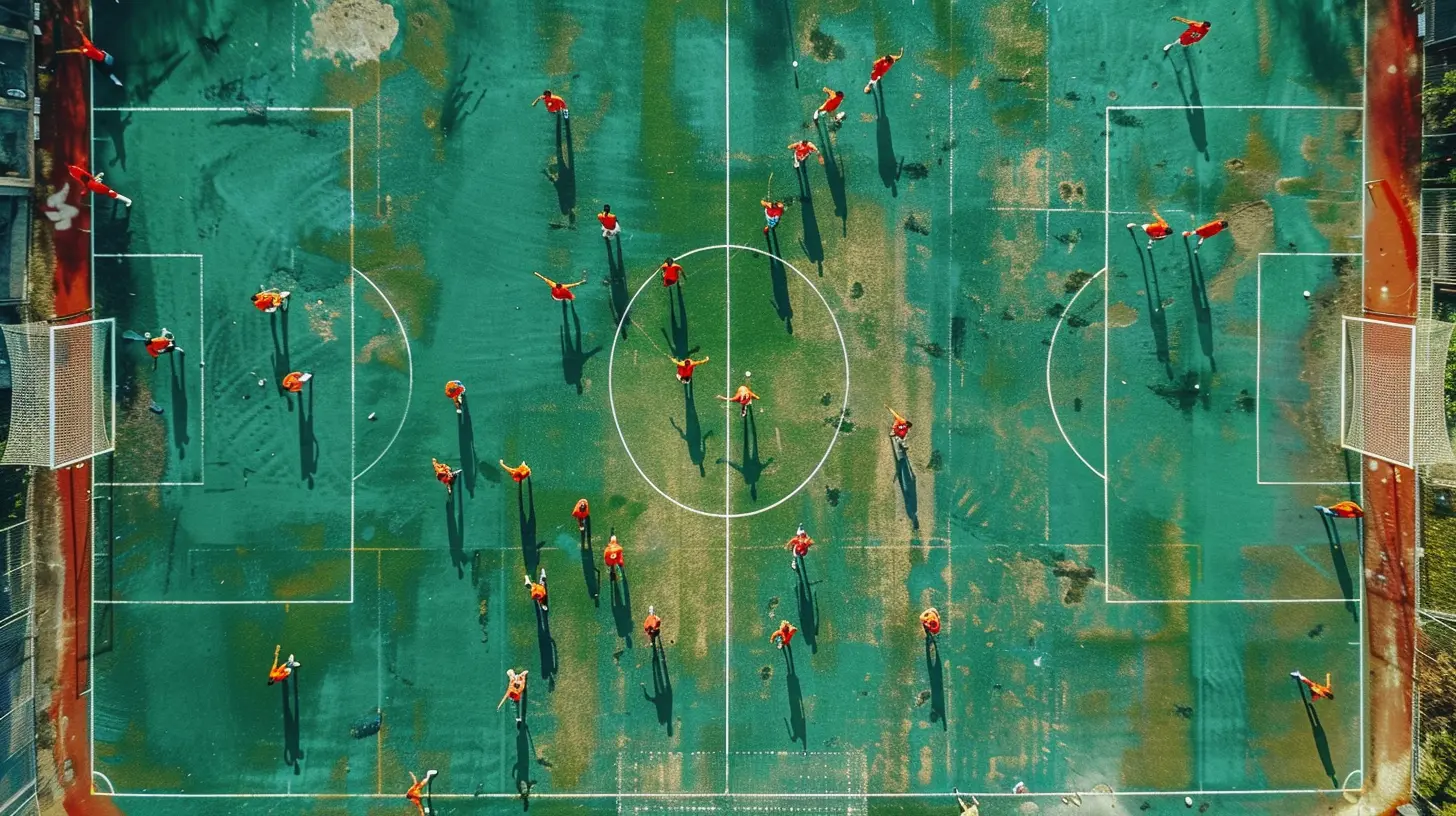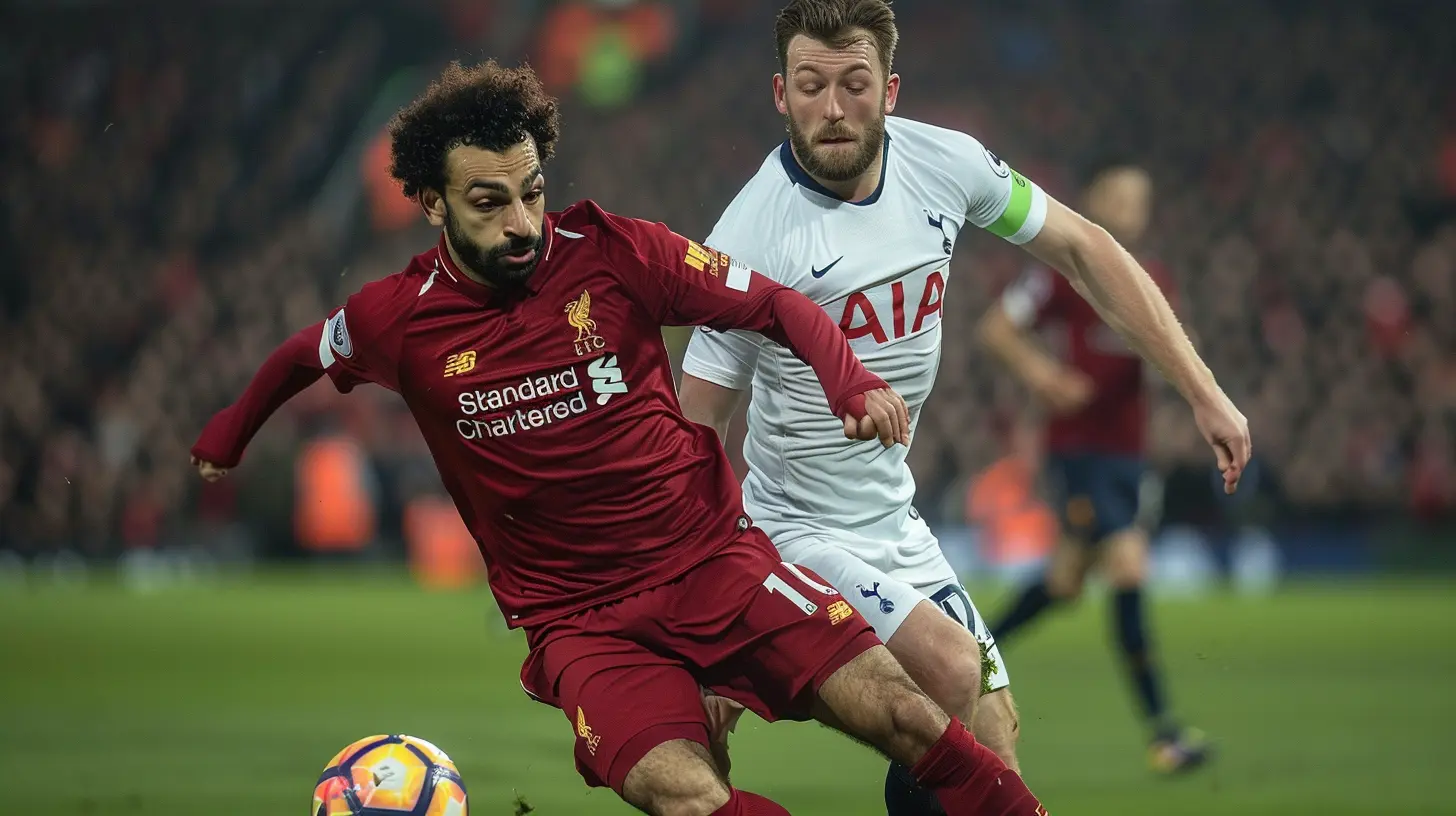The Role of the Double Pivot in Midfield Control
5 October 2025
Midfield is the heartbeat of any football team. It's where games are controlled, battles are won, and momentum is built. But when teams want stability, control, and tactical flexibility, one approach quietly shines through—enter the double pivot.
You might’ve heard the term thrown around in commentary or tactical breakdowns, but what is it really? Why are so many top managers turning to it? And how does it help dominate football's most vital area—the middle of the pitch?
Let’s break it all down.
What Exactly Is a Double Pivot?
First things first: what are we talking about when we say "double pivot"?The "pivot" essentially refers to the central midfielder who sits just in front of the defense. Traditionally, teams played with a single pivot—a lone holding midfielder tasked with shielding the backline and linking up play.
A double pivot simply means there are two players in that holding midfield role. They typically sit side-by-side in a 4-2-3-1 or a 3-4-3 system.
Sounds basic, right? But the tactical subtlety behind it can mean the difference between fluid domination and chaotic midfield mess.
Why Do Teams Use a Double Pivot?
Okay, so why not just stick to the classic single pivot? Why put two players there?Here’s the deal:
- Defensive Solidity: With two midfielders, teams are harder to break down. It's like doubling up on insurance policies.
- Build-Up Stability: One pivots while the other roams or presses. That fluidity helps avoid getting caught in possession.
- Tactical Flexibility: The shape can morph in and out of possession—it’s like a tactical chameleon.
- Better Press Resistance: Two players can create angles, giving more passing options and rescuing the team from high-press traps.
Think of it like driving with two hands on the wheel—it just offers more control.
The Core Responsibilities of the Double Pivot
Not all double pivots are created equal. Some partnerships are about balance; others are about pure defensive or offensive duties. But at their core, they share some must-do roles:1. Shielding the Defense
This is job #1. Whether facing a counterattack or a patient buildup, the double pivot acts as a wall just in front of the center-backs. They intercept, tackle, and delay opposition progress.2. Ball Progression
One of their main tasks is moving the ball from the backline to attack. This can be through short passes, long diagonals, or driving runs. They act as a bridge between defense and creativity.3. Recycling Possession
Double pivots are also responsible for keeping things ticking. They offer an outlet under pressure, switch play, and control the tempo. Think of them as the midfield metronome.4. Spatial Awareness
With two players in similar zones, spacing is everything. They must constantly scan, adjust their positioning, and cover each other without stepping on toes.
Different Types of Double Pivot Pairings
The beauty of the double pivot lies in its versatility. Coaches can tweak the pair based on playing style, opposition, or phase of play. Here are a few common pairings:1. The Destroyer + The Distributor
One breaks up play (the classic ball-winner), while the other dictates tempo. Think Fernandinho and Rodri or Kante and Jorginho at Chelsea.This yin-yang pairing is common when teams want defensive security plus controlled buildup.
2. Double Ball-Players
Some teams go bold. They field two pass-masters who can dominate possession and launch waves of attacks. Think of Real Madrid with Kroos and Modrić.But they leave gaps defensively, so it’s a risk-reward trade-off.
3. The Box-to-Box + The Anchor
Here, one player sits deep (anchor), while the other covers more ground, joining attacks and dropping back when needed. This combo gives both defensive cover and attacking transitions.A good example? Casemiro (anchor) and Fred (box-to-box) at Manchester United under certain setups.
The Double Pivot in Modern Football
Let’s be real—football evolves fast. Systems change, players adapt, and nothing stays static for long. But the double pivot? It’s quietly become the standard in modern setups.Tactical Adaptability
Modern football demands fluidity. The double pivot allows teams to shift from a 4-2-3-1 defensively into a 3-2-5 shape during buildup. One midfielder drops between the center-backs; the other pushes up.It gives control, structure, and freedom all in one.
Pressing Traps and Positional Play
The rise of high pressing means teams need more press-resistant players in midfield. A double pivot gives more passing lanes, reducing the chances of turnovers in dangerous areas.Also, in positional play (or “Juego de Posición”), pivots play a crucial role in maintaining structure while creating numerical superiority in midfield zones.
Setting the Tempo
Games are won in the details—and the tempo of play is one of them. The double pivot can slow down or speed up the game on command. They’re the rhythm section of the tactical orchestra.Iconic Double Pivot Duos in Football History
Let’s take a moment to shout out some of the midfield duos who’ve made the double pivot look like art.Xabi Alonso & Sergio Busquets (Spain 2010-2012)
Spain’s dominance wasn’t all tiki-taka flair. Behind the magic of Iniesta and Xavi was the composed duo of Alonso and Busquets—two brains with laser-sharp passing and positional understanding.Nemanja Matić & N'Golo Kanté (Chelsea 2016-17)
Under Conte, this duo was instrumental in Chelsea's title-winning campaign. Matic’s size and control combined with Kante’s tireless energy gave Chelsea both steel and silk in midfield.Toni Kroos & Casemiro (Real Madrid)
While Modrić often grabbed headlines, it was this combo that offered balance. Kroos controlled play with elegance, while Casemiro did the dirty work like a master craftsman.When Does the Double Pivot Struggle?
Of course, it's not all sunshine and trophies. The double pivot has its drawbacks.Static Positioning
If both midfielders sit too deep, there’s no drive going forward. It can make the play predictable—like passing side-to-side in a loop.Vulnerabilities Against Overloads
In systems like a 4-3-3, a trio can outnumber a double pivot. If the No.10 joins in, suddenly it’s 3v2, and your midfield’s drowning.Requires High-Level IQ
Both players need to read the game, adjust positions, and communicate constantly. Get it wrong, and the team becomes unstable.The Future of the Double Pivot
So where are we headed?With football getting faster and more tactically complex, the double pivot is here to stay—but with tweaks. Expect more hybrid roles, where one midfielder becomes a center-back in buildup or pushes up as a false full-back.
Managers like Pep Guardiola, Julian Nagelsmann, and Mikel Arteta are already pushing new versions—like the “inverted full-back” joining as the second pivot in possession.
So it’s not just about the two players. It’s about creating the feeling of a double pivot—even if it looks different on paper.
Final Thoughts
The double pivot might not be the flashiest part of a football team. But without it? Teams lose their shape, their rhythm, and their grip on the game. Whether it’s shielding the defense, building from the back, or smothering opponents with possession—it does the dirty work with quiet brilliance.Next time you're watching a big match, keep an eye on the midfield. Watch how the double pivot moves in harmony, covers space, and sets the tone. It’s the engine room—and when it hums, everything else falls into place.
all images in this post were generated using AI tools
Category:
TacticsAuthor:

Nelson Bryant
Discussion
rate this article
1 comments
Paula Mendez
Ah, the double pivot—like a married couple at a dinner party, they need to communicate well, complement each other’s strengths, and occasionally bicker about who left the dishes in the sink. Let's hope they don't trip over each other's feet on the pitch!
October 16, 2025 at 4:19 AM

Nelson Bryant
Absolutely! Effective communication and balance are key for a successful double pivot, just like in any partnership. Let's hope they shine together on the pitch!


